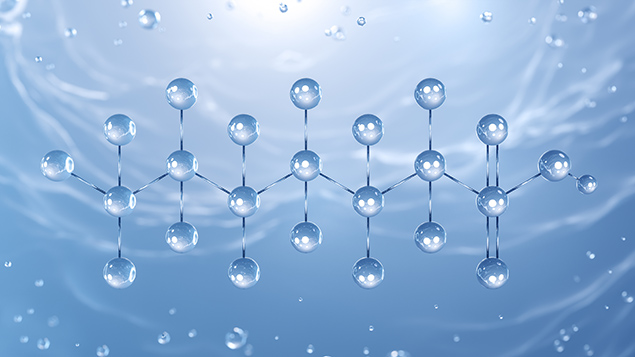Per- and poly-fluoroalkyl compounds, more commonly referred to as PFAS or "eternal chemicals", are a family of over 5,000 distinct compounds, including PFOA, PFOS, PFNA, PFHxS, etc.
Widely used since the 1950s for their non-stick, waterproofing and heat-resistant properties, PFASs are found in a wide variety of consumer goods such as kitchen utensils, cosmetics, food packaging, stain and water repellent sprays, and many others...
Due to their widespread production and use, their bioaccumulative nature and their ability to spread and persist in the environment, these compounds are of increasing concern due to their impact on health and associated ecosystems.

Issues related to PFAS
Water: the main source of exposure
Water-soluble PFAS contaminate surface and groundwater. These resistant compounds are not easily treated by wastewater treatment plants and are sometimes found in drinking water.
In addition, PFAS can also accumulate in living organisms, especially fish, and contaminate the food chain.
Thus, humans are directly exposed to these substances.
A recognised health impact
Scientific studies have associated exposure to PFAS with a wide range of adverse health effects such as :
- effects on reproduction
- developmental effects or delays in children
- increased risk of certain cancers
- interference with the hormonal system
- disruption of the immune system
Limited knowledge of PFASs and their impacts
Although perfluorinated substances have been around for more than 70 years, few health impact studies have been carried out in France. At the national level, the decree of 22 April 2022 provides for the monitoring of 5 categories of PFAS in surface water: PFOS and its derivatives as well as 4 other substances deemed "relevant": PFOA, PFHxA, PFDA, PFHS. However, the thousands of other PFAS are not monitored even though their safety is not proven. Moreover, to circumvent regulatory constraints, manufacturers have introduced new PFASs with similar characteristics and for which the health impacts are unknown.
Limitations of current analyses
Current scientific advances do not allow us to give a reference threshold value for all PFAS and their complex perfluorinated associations.
With more than 5000 known PFAS, undertaking substance-by-substance health and environmental risk assessments would be time-consuming and costly. This is why the deployment of analytical approaches using bioassays is relevant.
Cocktail effects
PFAS are most often found in mixtures in the environment and rarely, if ever, as single contaminants. The synergistic effects of PFAS on biological systems are multiple and complex.
Given this complexity, PFAS cannot be analysed by analytical chemistry methods alone.
The contribution of Tame-Water
Tame-Water has been implementing various bioassays for many years that detect specific undesirable activities.
In the case of PFAS, certain well-characterised biological activities can be detected by Tame-Water bioassays. These assays are based in particular on the in vitro use of PPAR cells. Indeed, numerous studies have shown that most PFAS are activators of the peroxisome proliferator receptor (PPAR).
Thanks to these bioassays, Tame-Water can detect early warning signals of PFAS pollution.

